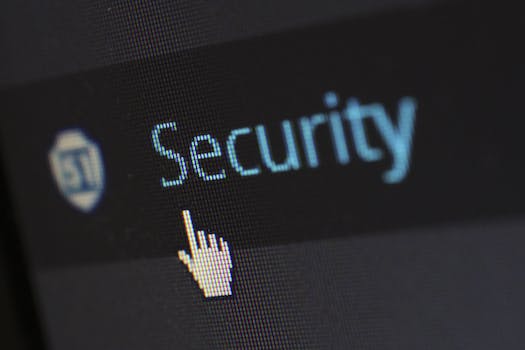

-
Table of Contents
"Empowering Businesses and Individuals with Cutting-Edge Cybersecurity Solutions for a Safer Digital Future by 2024"
Introduction
Enhancing cybersecurity is a critical priority in today's digital landscape. As technology continues to advance, so do the threats and risks associated with cyberattacks. To ensure the safety and security of individuals, organizations, and nations, it is imperative to implement effective strategies to bolster cybersecurity. By 2024, significant advancements and measures need to be taken to strengthen defenses, mitigate vulnerabilities, and protect against emerging threats. This article explores various strategies that can be employed to enhance cybersecurity and safeguard against potential cyber threats by 2024.
The Importance of Multi-Factor Authentication in Cybersecurity
In today's digital age, where technology is an integral part of our lives, cybersecurity has become a paramount concern. With the increasing number of cyber threats and attacks, it is crucial for individuals and organizations to take proactive measures to protect their sensitive information. One such measure that has gained significant importance in recent years is multi-factor authentication (MFA).
Multi-factor authentication is a security process that requires users to provide multiple forms of identification before granting access to a system or application. It adds an extra layer of protection by combining something the user knows (such as a password), something the user has (such as a mobile device), and something the user is (such as a fingerprint or facial recognition). By requiring multiple factors for authentication, MFA significantly reduces the risk of unauthorized access and strengthens overall cybersecurity.
The importance of MFA in cybersecurity cannot be overstated. Traditional password-based authentication has proven to be vulnerable to various attacks, such as brute force attacks, phishing, and credential stuffing. These attacks exploit weak or stolen passwords, putting sensitive data at risk. MFA mitigates these risks by adding an additional layer of security, making it much more difficult for attackers to gain unauthorized access.
Furthermore, MFA provides an added level of convenience for users. With the increasing number of online accounts and services that individuals use on a daily basis, it is common for people to reuse passwords across multiple platforms. This practice, known as password reuse, is highly risky as it means that a single compromised password can lead to unauthorized access to multiple accounts. MFA eliminates this risk by requiring additional forms of authentication, reducing the reliance on passwords alone.
Implementing MFA is relatively straightforward, and there are various methods available to suit different needs. One common method is SMS-based authentication, where a one-time password (OTP) is sent to the user's mobile device. This OTP is then entered along with the password to complete the authentication process. Another method is the use of authentication apps, such as Google Authenticator or Microsoft Authenticator, which generate time-based OTPs that are synchronized with the user's device.
While MFA is an effective security measure, it is not without its limitations. One challenge is the potential inconvenience it may cause for users. Having to provide multiple forms of authentication can be time-consuming and may lead to frustration, especially if the process is not streamlined. To address this, organizations should strive to implement user-friendly MFA solutions that minimize disruption while maintaining a high level of security.
Another challenge is the risk of relying solely on mobile devices for authentication. As mobile devices become increasingly targeted by cybercriminals, there is a concern that compromising a user's mobile device could grant unauthorized access to all associated accounts. To mitigate this risk, organizations should consider implementing additional security measures, such as biometric authentication or hardware tokens, to further enhance the security of MFA.
In conclusion, multi-factor authentication is a crucial component of cybersecurity in today's digital landscape. It provides an additional layer of protection against unauthorized access and significantly reduces the risk of data breaches. While there may be challenges in implementing and managing MFA, the benefits far outweigh the drawbacks. By embracing MFA, individuals and organizations can bolster their cybersecurity and ensure the safety of their sensitive information in the years to come.
Implementing Robust Firewall Systems for Enhanced Cybersecurity

In today's digital age, cybersecurity has become a critical concern for individuals, businesses, and governments alike. With the increasing frequency and sophistication of cyber threats, it is imperative to implement robust strategies to bolster safety and protect sensitive information. One such strategy is the implementation of robust firewall systems, which act as a barrier between a trusted internal network and an untrusted external network, effectively preventing unauthorized access and ensuring data integrity.
Firewalls have been a fundamental component of network security for decades, but as cyber threats evolve, so must the firewall systems. Traditional firewalls primarily focused on filtering network traffic based on IP addresses and port numbers. However, modern firewalls have evolved to include advanced features such as deep packet inspection, intrusion prevention systems, and application-level gateways. These features enable firewalls to analyze the content of network packets, detect malicious activities, and block potential threats in real-time.
Implementing a robust firewall system involves several key steps. Firstly, organizations need to conduct a thorough assessment of their network infrastructure to identify potential vulnerabilities and determine the appropriate firewall solution. This assessment should consider factors such as the size of the network, the types of applications and services being used, and the level of security required. Based on this assessment, organizations can select a firewall solution that aligns with their specific needs and budget.
Once a firewall solution has been chosen, the next step is to configure and deploy the firewall system. This involves defining firewall rules and policies that dictate how traffic should be allowed or blocked. It is crucial to strike a balance between security and usability, ensuring that legitimate traffic is not unnecessarily blocked while still providing robust protection against cyber threats. Regular monitoring and fine-tuning of firewall rules are essential to maintain an effective defense against evolving threats.
In addition to the technical aspects, organizations must also focus on educating their employees about the importance of cybersecurity and the role of firewalls in protecting sensitive information. Human error remains one of the leading causes of security breaches, so it is crucial to raise awareness about best practices such as using strong passwords, avoiding suspicious links and attachments, and regularly updating software and applications. By fostering a culture of cybersecurity awareness, organizations can significantly reduce the risk of successful cyber attacks.
Furthermore, as technology continues to advance, organizations should consider implementing next-generation firewall (NGFW) systems. NGFWs combine traditional firewall capabilities with additional features such as advanced threat detection, sandboxing, and integrated security intelligence. These advanced features enable NGFWs to provide more comprehensive protection against sophisticated cyber threats, including zero-day exploits and advanced persistent threats.
In conclusion, implementing robust firewall systems is a crucial strategy for enhancing cybersecurity and protecting sensitive information. By conducting a thorough assessment, selecting an appropriate firewall solution, configuring and deploying the system, and educating employees about cybersecurity best practices, organizations can significantly bolster their defenses against cyber threats. Furthermore, considering the adoption of next-generation firewall systems can provide even greater protection against evolving and sophisticated threats. As we look towards the future, it is essential for organizations to prioritize cybersecurity and invest in strategies that will ensure the safety of their digital assets by 2024 and beyond.
Strengthening Data Encryption Protocols to Safeguard Against Cyber Threats
In today's digital age, where technology plays a crucial role in our daily lives, cybersecurity has become a paramount concern. With the increasing number of cyber threats and attacks, it is imperative to enhance our cybersecurity measures to ensure the safety of our data and protect against potential breaches. One effective strategy to bolster cybersecurity is by strengthening data encryption protocols.
Data encryption is the process of converting information into a code that can only be deciphered by authorized individuals or systems. It provides an additional layer of security by making it difficult for hackers to access and understand the data they intercept. However, as technology advances, so do the techniques used by cybercriminals. Therefore, it is crucial to continually improve and update encryption protocols to stay one step ahead of potential threats.
One way to enhance data encryption is by adopting stronger encryption algorithms. Encryption algorithms are mathematical formulas used to encrypt and decrypt data. By using more complex algorithms, it becomes increasingly challenging for hackers to crack the code. The adoption of advanced encryption algorithms, such as the Advanced Encryption Standard (AES), can significantly enhance the security of sensitive data.
Another strategy to strengthen data encryption protocols is by implementing multi-factor authentication. Multi-factor authentication requires users to provide multiple forms of identification, such as a password, fingerprint, or facial recognition, before gaining access to a system or data. This additional layer of security makes it more difficult for unauthorized individuals to gain access to sensitive information, even if they manage to bypass the encryption.
Furthermore, regularly updating encryption keys is essential to maintaining strong data encryption. Encryption keys are the codes used to encrypt and decrypt data. By regularly changing these keys, even if a hacker manages to obtain one, it becomes useless after a certain period. This practice ensures that even if a breach occurs, the compromised data remains encrypted and inaccessible to unauthorized individuals.
Additionally, organizations should consider implementing end-to-end encryption. End-to-end encryption ensures that data remains encrypted throughout its entire journey, from the sender to the recipient. This means that even if the data is intercepted during transmission, it remains unreadable to anyone without the proper decryption key. By implementing end-to-end encryption, organizations can protect their data from potential breaches at every stage of its transfer.
Moreover, it is crucial to educate individuals and organizations about the importance of data encryption and cybersecurity best practices. Many cyber threats are a result of human error, such as weak passwords or falling victim to phishing scams. By raising awareness and providing training on cybersecurity, individuals can become more vigilant and take necessary precautions to protect their data. Organizations should also establish clear policies and guidelines regarding data encryption and cybersecurity practices to ensure that all employees are aware of their responsibilities in maintaining a secure environment.
In conclusion, enhancing cybersecurity is of utmost importance in today's digital landscape. Strengthening data encryption protocols is a crucial strategy to bolster safety and protect against cyber threats. By adopting stronger encryption algorithms, implementing multi-factor authentication, regularly updating encryption keys, implementing end-to-end encryption, and educating individuals and organizations about cybersecurity best practices, we can significantly enhance our cybersecurity measures and safeguard our data by 2024.
Q&A
1. What are some strategies to enhance cybersecurity and bolster safety by 2024?
Implementing multi-factor authentication, regularly updating software and security patches, conducting regular security audits, and providing cybersecurity training to employees are some strategies to enhance cybersecurity and bolster safety by 2024.
2. Why is enhancing cybersecurity important?
Enhancing cybersecurity is important to protect sensitive data, prevent unauthorized access, and mitigate the risk of cyber threats such as data breaches, ransomware attacks, and identity theft.
3. How can organizations prioritize cybersecurity in their operations?
Organizations can prioritize cybersecurity by allocating sufficient resources and budget for cybersecurity measures, establishing a dedicated cybersecurity team, implementing robust security protocols and policies, and staying updated with the latest cybersecurity trends and best practices.
Conclusion
In conclusion, enhancing cybersecurity is crucial to bolster safety in the digital landscape. By implementing effective strategies, such as strengthening network security, promoting user awareness and education, adopting advanced technologies like artificial intelligence and machine learning, and fostering international cooperation, organizations and individuals can significantly improve their cybersecurity posture by 2024. It is imperative to prioritize cybersecurity measures to protect sensitive data, prevent cyber threats, and ensure a secure digital environment for all.











